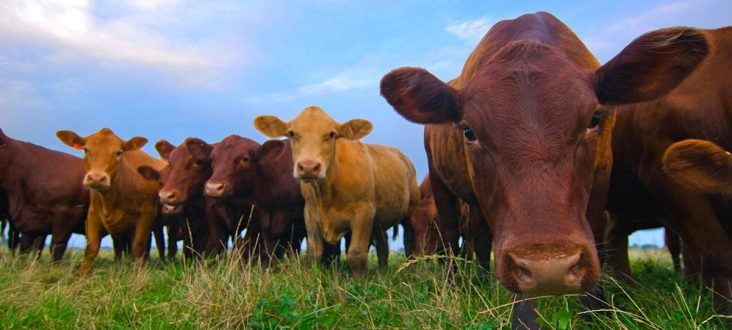U.S. median household farm incomes may rise, Harvey’s impact uncertain on agri industry
by August 30, 2017 5:33 pm 413 views

The United States has more than 2 million farmers and the median household incomes are projected to increase by less than 1% this year to $76,831 as compared to 2016. But most of that income ($67,969) is fueled by non-farm sources, said United States Department of Agriculture Economist Carrie Litkowski.
Wages, other business income, investment profits, and other income sources supplement the economic health of many farms across the country, she said.
“Small farm income has been in the negative for several years … the well-being of farm-operator households has been contingent on non-farm income sources,” she said.
Farm income rates will remain stagnant this year even as net farm income rates are projected to rise by 13% this year, to $63.4 billion this year. The increases will likely be offset by increasing labor, fuel, and other input costs, she said. Inflation is expected to rise 2% this year, and it will impact the slight, overall bump in farm incomes.
Cash receipts across several agriculture economic sectors are expected to rise in 2017. Soybeans will rise by 5.2% to $40 billion, while cotton will increase by 18% to $7 billion. Cattle/calves will increase 6.2% to $68 billion, while hogs will be up 15.7% to $22 billion. Corn will remain unchanged at $46 billion.
HURRICANE HARVEY IMPACTS
Losses are expected in nut, fruit, and specialty agri sectors with losses impossible to project because of Hurricane Harvey. South Texas is a part of the “Fruitful Rim,” a geographic designation doled to it by the USDA. Parts of the country are divided into these designations. They’re not in all cases geographically contiguous, but grow similar crops, or raise livestock under similar circumstances. The Fruitful Rim includes most of Florida and the West Coast. Many fruits and nuts are grown in these regions, and before the hurricane swept ashore, the designated area was expected to lose about 5.7% in cash receipts as compared to 2016.
Harvey will almost certainly impact growers along the Gulf Coast, but the effect might be surprising, she said. Damaged or destroyed crops will mean less are available on the market.
“You could have price increases as a result of those losses … farmers in this area traditional have good crop insurance,” she said. “Crop insurance may help them cover their losses.”
Dr. Joel Myers, founder, president and chairman of AccuWeather, said Hurricane Harvey “will be the worst natural disaster in American history.” He predicts the negative impact will near $160 billion, which is similar to the combined effect of Hurricanes Katrina and Sandy.
“This represents a negative impact on the economy of 8/10 of one percent of the gross national product or GDP. The GDP is $19 trillion currently. Business leaders and the Federal Reserve, major banks, insurance companies, etc. should begin to factor in the negative impact this catastrophe will have on business, corporate earnings and employment,” Myers noted in a statement released Wednesday (Aug. 30). “The disaster is just beginning in certain areas. Parts of Houston, the United States’ fourth largest city will be uninhabitable for weeks and possibly months due to water damage, mold, disease-ridden water and all that will follow this 1,000-year flood.”
ARKANSAS ESTIMATES
Soybean and cotton cash receipts increases could benefit Arkansas’ farmers. About 3.55 million acres of soybeans have been planted this year, a 13.4% (420,000 more acres) as compared to 2016. Soybeans acres increased after heavy springtime floods damaged fields in the east and northeastern parts of the state. Low commodity prices, especially rice, forced farmers to plant more soybeans.
Arkansas cotton acreage also saw a significant leap over 2016 numbers, as growers planted approximately 440,000 acres of upland cotton, an increase of more than 60,000 acres. In late March, the USDA prospective plantings report offered a more optimistic estimate, with Arkansas was expected to have 500,000 acres. Periodic rains in late April and May fouled the crop’s optimal planting window. Nationwide, cotton acreage increased by about 20% from last year, to approximately 12.1 million acres.
Arkansas, the leading rice producer in the country, lost about 100,000 rice acres as a result of the floods that started along the Black River near Pocahontas in Randolph County in late April and early May. The state is still projected to harvest a little more than 1 million rice acres.
Two factors could impact yields, however. Flood waters forced many farmers to plant crops later in the season, and those plants typically produce lower yields, according to the University of Arkansas Department of Agriculture. Dicamba, a volatile herbicide used to kill pig weed, and other nuisance grasses in fields has been temporarily banned. Dicmaba can drift into fields with non-dicamba resistent crops and it will damage them. The extent of the damage done by the herbicide has not been tabulated, but the Arkansas Plant Board has received hundreds of complaints since mid-May.
Many parts of the Natural State are part of the “Mississippi Portal,” geographic designation. Despite these challenges to Arkansas farmers, the projections are positive from an income perspective. Net farm cash incomes are projects to rise by 4.7% in the Mississippi Portal this year.
